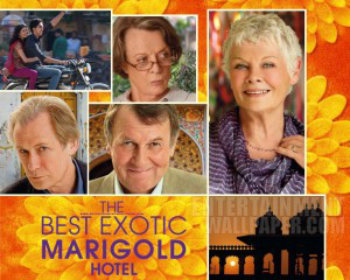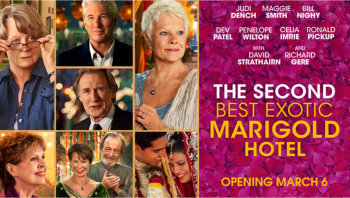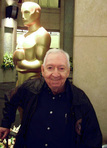Sequels
A sequel is a work of literature, film or TV that continues the story or expands upon some earlier work. This type of narrative portrays events or people who have inhabited a previous work—usually in a chronological manner. Generally the follow up picks up on dangling plot points of the original and introduces new conflict to produce another allied story. In other words, the sequel continues elements of the original story with the same characters and settings. A sequel can lead to a series, a string of related productions.
Sequels are attractive to their creators because less risk is involved when you return to a story that has already achieved a certain amount of popularity. Sequels come about because their original setting, story or characters are already established. Audiences seem to like to revisit popular characters and settings. Publishers and film producers find sequels financially appealing because they are dealing with a product that has built in brand recognition. That’s like getting free publicity.
The most common sequels are movies where you will find already tested stories with well beloved characters attached. Sometimes the title has a number behind it or will be some variation of the original title. (Home Alone and Home Alone 2; Shanghai Noon and Shanghai Knights.)
A good bit of the time sequels do much more business than their predecessor. This reflects the already built-in publicity factor. Many times the sequel gets a rotten review but can still bring in more money than the original, which got great reviews. If a producer does the research and finds what elements led to a film’s success in the first place, all they have to do is recycle. This causes their chances of making money off of the sequel an almost done deal. If though, they change some major element around (actor, fictional character, location) they can lose money very easily.
All in all, film producers look at sequels as “hot” slot machines that pay off. Many of us have been to a casino and discovered a certain machine that is “hot.” It pays off time and time again. Are you going to change to another machine? No. That is why a film that makes a lot of money is immediately thought of as a “hot” property for a sequel.
Sometimes movie magic can happen in the world of sequels when people take long shots rather than betting on sure things. In 1992 Roberto Rodriguez made a film called El Mariachi for ten-thousand dollars. It was a hit and brought in two-million dollars. Its sequel Desperado came out three years later and brought in twenty-five million dollars.
The first Austin Powers film in 1997 brought in fifty-three million dollars but its sequel Austin Powers: The Spy Who Shagged Me brought in well over two-hundred million dollars. To those who saw both films, I dare say you’d think the sequel was four times better than the original. The second simply repeated all the elements of the first film. In other words, old wine in new bottles. The audience merely got a revamped version of the original film. This is a perfect example of successful sequel making.
A Tale of Two Movies
In an effort to point out a few things about motion picture sequels, I have selected an original film and its sequel, which I saw last week. I am talking about The Best Exotic Marigold Hotel and The Second Best Exotic Marigold Hotel.
 First of all, money talks. Marigold #1 cost ten million dollars to make and brought in 155 million worldwide, including video rentals and sales. Marigold #2 has only been out a little over a month. It has brought in nearly seventy million dollars domestic and international. Video rentals and sales have not yet been recorded.
First of all, money talks. Marigold #1 cost ten million dollars to make and brought in 155 million worldwide, including video rentals and sales. Marigold #2 has only been out a little over a month. It has brought in nearly seventy million dollars domestic and international. Video rentals and sales have not yet been recorded.
One can see that the original film was a gold mine. It was what one calls a sleeper. This is a film that no one really expects to become a big winner but ends up surprising everyone. The original film garnered overall good reviews, mainly because of its two gold-mine movie stars: Maggie Smith and Judi Dench. Who doesn’t like them? Then you had two male favorites Tom Wilkinson and Bill Nighy, both extremely strong and capable actors. The story is centered around a small group of British pensioners who move to India in an attempt to make their retirement checks stretch further. In the process they find companionship, fun and an exotic existence. The film was based on a very popular novel entitled These Foolish Things by Deborah Moggach. In a way, the Marigold Hotel film could be called “Fifty Shades of Grey Hair.” The hotel itself is a run-down site overseen by an enthusiastic young man who does his best to keep the place going. The film is charming, endearing and entertaining.
Then we come to its sequel, which is called The Second Best Exotic Marigold Hotel. The producers gladly put out ten million in production costs for this film. They made so much money off the first film they knew a sequel would be like money in the bank. I’m sure they had to pay Maggie Smith and Judy Dench handsomely because they knew these two ladies would be the backbone of any possible sequel. Without them, a sequel could not get off the ground.
The original film adhered to recognized screenplay writing practices and had the plot structure of a popular novel on which to rely. The second had nothing to rely on and thus came off as a virtual hodgepodge of people bouncing around like orbs in a pinball machine.
My assessment of the films would be as follows: The original was a 9 for me. The sequel was 4. I gave it this low mark because I had a very difficult time keeping up with the various pieces of the film and fitting them together. There was a definite reason for all this mumbo jumbo. When one crafts a screenplay, (as I have stated in several of my blogs) one should have no more than 8 central characters of which three are called the stars—otherwise your audience will need a scorecard to tell who is doing what to whom. Marigold #1 adhered to this formula. They had 8 central people of which three were stars: Judi Dench, Maggie Smith and Tom Wilkerson. There were 5 other “also ran” characters, one of which was Sonny (Dave Patel), the young owner of the hotel. Thus the original screenplay worked.
 Marigold #2 DID NOT adhere to the 8 person and 3-star rule. They had fifteen people, all scrambling for their moment in a mediocre soap opera storyline. Tom Wilkinson died in the original film so his star power was replaced in the sequel by actor Richard Gere, who in my estimation looked as lost in the story line as I was. Sonny (Dave Patel), the hotel’s owner, was upgraded to star status in the sequel. From the opening moment of the film, he mugged, rolled his eyes and yelled his way through most of his scenes. In the original, he was likable; in the sequel he was quirky. Smith and Dench managed (as the producers knew they would) to turn gush into gold.
Marigold #2 DID NOT adhere to the 8 person and 3-star rule. They had fifteen people, all scrambling for their moment in a mediocre soap opera storyline. Tom Wilkinson died in the original film so his star power was replaced in the sequel by actor Richard Gere, who in my estimation looked as lost in the story line as I was. Sonny (Dave Patel), the hotel’s owner, was upgraded to star status in the sequel. From the opening moment of the film, he mugged, rolled his eyes and yelled his way through most of his scenes. In the original, he was likable; in the sequel he was quirky. Smith and Dench managed (as the producers knew they would) to turn gush into gold.
All in all though, Marigold #2 lives up to its name—Second Best. The film’s name could have been from Hollywood to Bollywood because the film starts off in Hollywood and ends the film by throwing us a big ballyhoo Indian dance number so typical of Bollywood type productions.
Wrap up: The producers will make tons of money off this sequel even though it doesn’t live up to the quality of the original. In fact, it might even end up making more money than the original.
Sequels work more times in the bucks department than they do in the critical department. In fact, the new novel of mine just out entitled MURDER IMPOSSIBLE is a sequel to my book TEDDY BEAR MURDERS. It is already out-grossing its predecessor.



